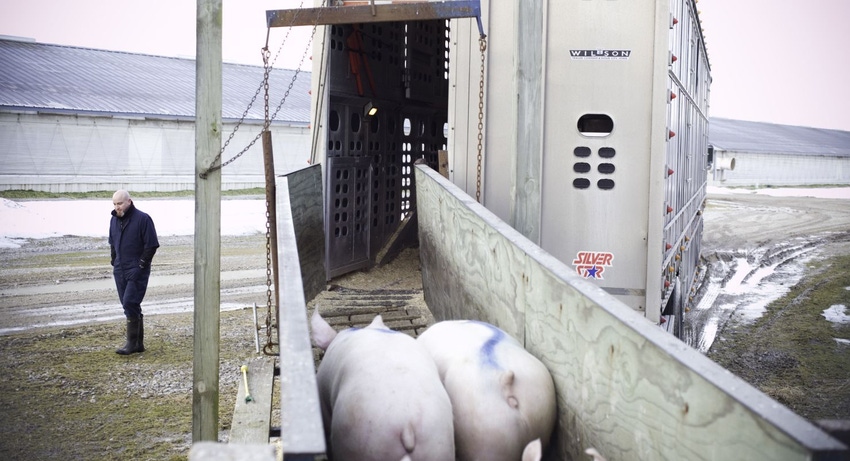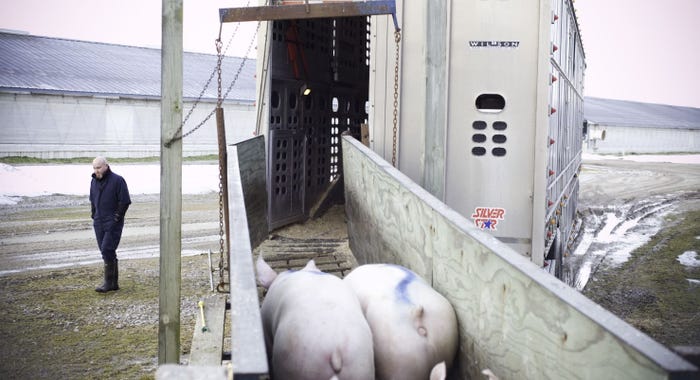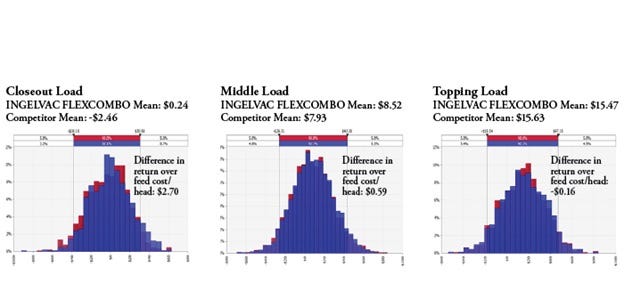Choose the right vaccination protocol to reduce variability in your swine herds
By eliminating or reducing disease from a herd, producers can reduce the time and expense it takes to get that last 20 percent of the barn to market.
November 30, 2017

Sponsored Content
In swine production, there will always be some natural variability within the herd. Disease is the No.1 environmental cause of variability in pig production, and one of the greatest destroyers of profitability. By eliminating or reducing disease from a herd, producers can tighten the weight spread and reduce the time and expense it takes to get that last 20 percent of the barn to market.
Boehringer Ingelheim (BI) recently completed a study on the economics of disease and pig variability with Dr. Dennis DiPietre, a well-known agricultural economist with KnowledgeVentures, LLC.

Explaining the impact of disease on profit, DiPietre said, “Disease impact is multi-dimensional and affects all of the four drivers of profit in production. These include average daily gain, feed conversion efficiency, meat quality characteristics and death loss.” Prevention of disease using vaccines is the more effective and profitable way to eliminate the variability caused by disease in swine herds. However, we know that all vaccines aren’t created equal, and may not necessarily provide the same return on investment (ROI).
Economics Tell a Different Story
To take an in-depth look at that ROI, DiPietre conducted an economic modeling study on behalf of BI, using data collected from a head-to-head study comparing the efficacy of two combination vaccines - BI’s one-dose FLEXcombo® and a leading competitive vaccine – which protect against porcine circovirus Type 2 (PCV2) and Mycoplasma hyopenumoniae.1 While the conclusion of the head-to-head study showed parity between the one-dose and two-dose products, a closer look into the economics tells a different story.
Historically, research trials have settled on group outcome means to evaluate animal health products and protocols. These trials typically send all pigs to market at the same time or same average weight, which means they rely on the average of the group instead of accounting for the differences in health, performance and economic impact of individual pigs, and the impact on pig weight variability.
In the study, DiPietre created a stochastic, bio-economic profit optimization model to test for profitability differences in the trial groups. The study simulated typical marketing patterns for U.S. producers, who market a finisher barn in “three cuts” rather than ‘all at once,’ as well as the sale dates for three marketing groups (heaviest group, middle weight group, and light weight tail enders).2
Turn Your Barn Faster
What DiPietre found was that while on paper the two products perform similarly, one vaccination performed better within the tail-end group. “When we marketed both sets of pigs that had different vaccinations in a standard protocol, the first cut for both had basically no difference in outcome,” he said. “The middle group had a slight advantage, but when you look at the final tail, there was a $2.70 per head difference in the group that was vaccinated with FLEXCOMBO versus the competitive vaccine.”

In other words, this model shows that FLEXCOMBO has a positive impact on reducing pig variability and increasing their overall economic value. Not only can it help increase profit, but you may be able to turn the barn faster.
What does this mean for producers? While different packer matrices and selling strategies may yield different results, by using FLEXCOMBO versus the leading competitive vaccine, producers may see more than an $800 profit advantage in a 1,000-head finishing barn.
For more information, contact your Boehringer Ingelheim representative, or visit www.bi-vetmedica.com/species/swine.html.
References:
1Fano, E., et al, Comparison of efficacy between two PCV2 vaccination protocols under PCV2d field exposure. AASV. 2017;95-97.
2DiPietre, D., et al. Exploring profitability differences when average wean-finish production metrics are essentially equal between groups. Proceedings. Allen D. Leman Conference. 2017.
Flexcombo is a registered trademark of Boehringer Ingelheim GmbH.© 2017 Boehringer Ingelheim Vetmedica, Inc.
About the Author(s)
You May Also Like



